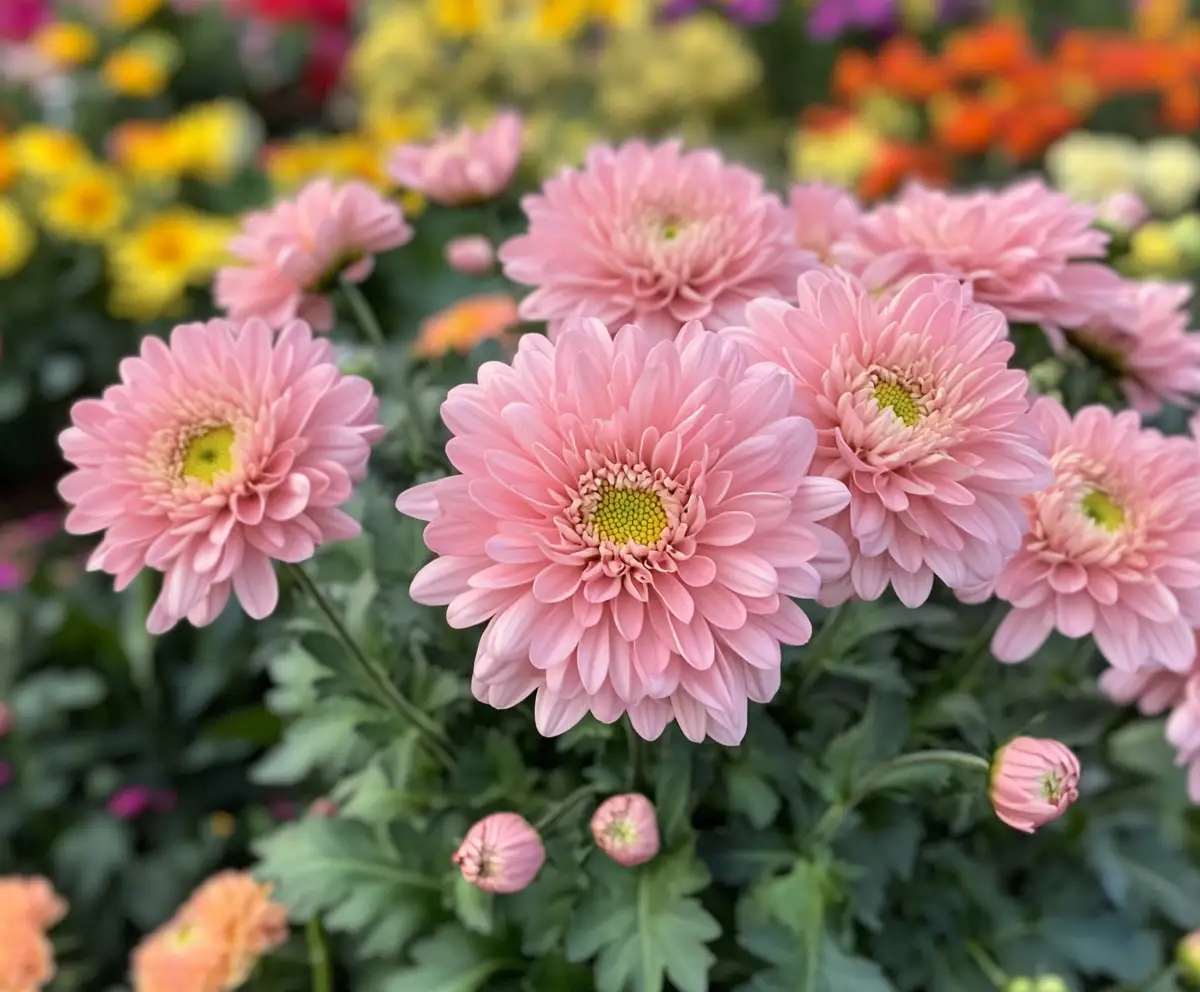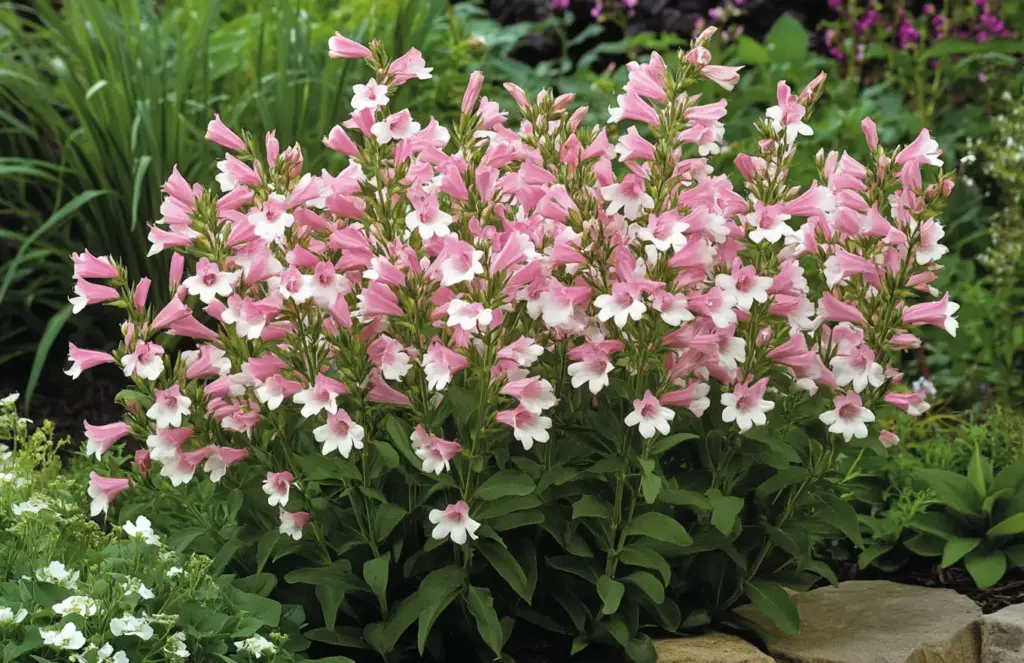A perennial garden is a treasure trove of color, fragrance, and year-round charm. These perennial flowering plants bring consistent beauty to your backyard, offering resilience and low maintenance that make them a gardener’s best friend.
Unlike annuals, perennials return year after year, their roots anchoring them deep into the soil. This allows them to thrive in various climates. If you’re planning a vibrant perennial garden, consider exploring some of the best perennial flowers for full sun to maximize your garden’s bloom potential.
Incorporating perennial flowering plants not only reduces planting efforts but also supports pollinators like bees and butterflies. This is a wonderful way to boost your garden’s ecosystem, similar to the approach shared in low-maintenance outdoor potted plants.
Whether you’re a seasoned gardener or just starting out, creating a perennial garden is a rewarding experience that yields stunning blooms and an inviting outdoor space. For more inspiration, check out these affordable backyard renovation ideas to get started!
🌿 Love gardening inspiration? Follow me on Pinterest for bold plant ideas, tips, and seasonal color!
Table of Contents
1. Penstemon
Penstemon, a standout choice for any perennial garden, offers a vibrant burst of color with its tubular, two-lipped flowers that attract hummingbirds and bees alike. Native to North America, Penstemon features a variety of species, each with its own unique charm. These perennial flowering plants are known for their hardiness and adaptability, thriving in diverse conditions and making them a staple in any backyard garden.
🌱 Growing Conditions
- Soil: Well-draining soil is essential to prevent root rot and encourage healthy growth.
- Location: Full sunlight is key for abundant blooms.
- Temperature: Ideal range is 40–60°F, perfect for many temperate climates.
- Plant Height: Typically grows between 3–6 feet, making it an excellent addition to layered garden designs.
- Fertilizers: Organic compost or balanced fertilizers help maintain lush foliage and steady growth.
Penstemon is a delightful addition that adds both visual interest and ecological value to your perennial garden.
2. Daffodils
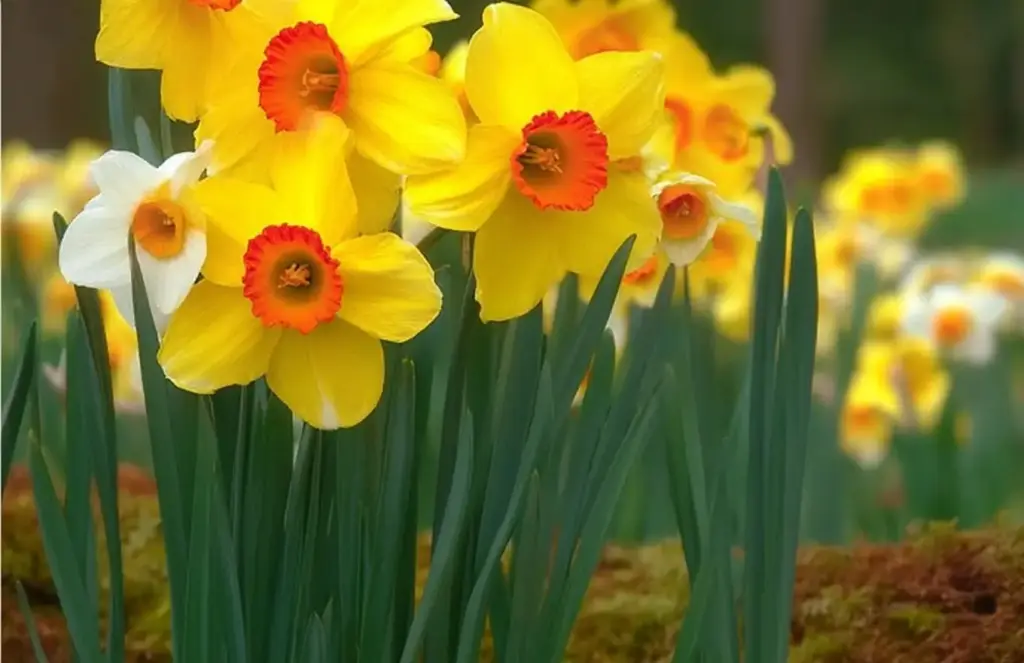
No perennial garden is complete without the cheerful sight of daffodils. These perennial flowering plants brighten spring with their iconic trumpet-shaped blooms in shades of white and yellow. Belonging to the amaryllis family, daffodils are both hardy and reliable, making them a favorite among gardeners seeking low-maintenance beauty that comes back year after year.
🌱 Growing Conditions
- Soil: Well-draining soil is crucial to prevent bulb rot and to ensure healthy root development.
- Location: Full sunlight helps these early bloomers thrive and produce abundant flowers.
- Temperature: Daffodils prefer moderate temperatures, ideally between 50–75°F.
- Plant Height: Generally ranges from 1–3 feet, creating a lovely mid-height layer in your perennial garden.
- Fertilizers: Use a low-nitrogen, high-potash fertilizer to promote vibrant blooms without excessive leaf growth.
Daffodils add timeless charm and effortless beauty to any perennial flowering plants collection.
3. Sedum
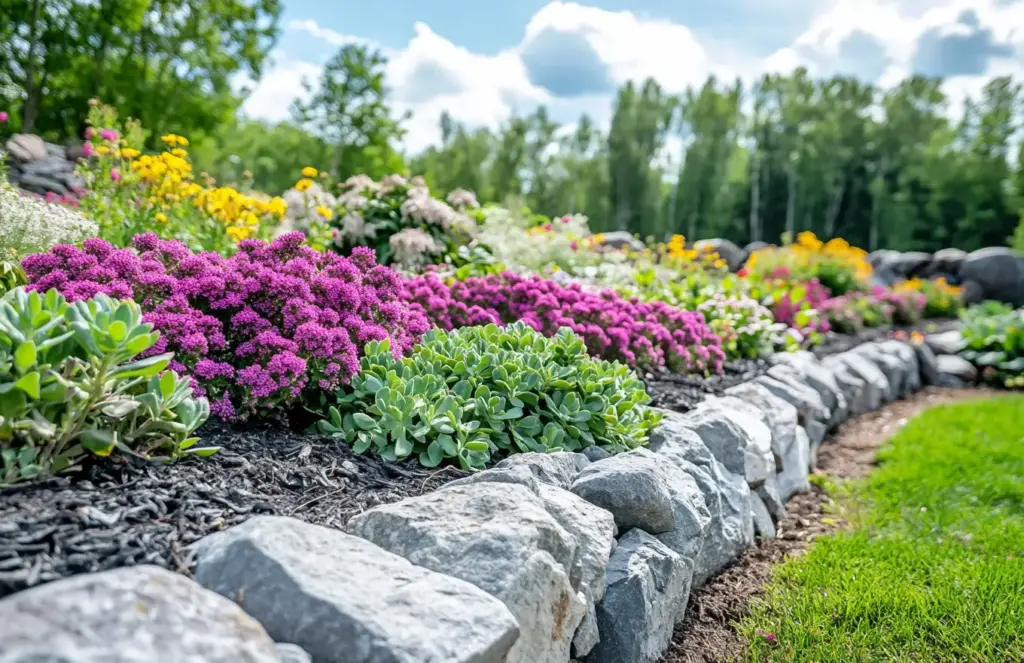
Sedum is a must-have in any perennial garden, offering both beauty and resilience. Also known as stonecrop, this hardy genus includes over 600 species, many of which are ideal for gardeners looking for drought-tolerant, low-maintenance perennial flowering plants. With its fleshy, water-storing leaves and star-shaped flowers that bloom in late summer and fall, Sedum brings a unique texture and seasonal interest to your garden beds.
🌱 Growing Conditions
- Soil: Sedum thrives in well-draining soil, which prevents excess moisture that can cause root rot.
- Location: Full sunlight is key to encouraging dense growth and vibrant blooms.
- Temperature: Ideal temperatures range from 75–80°F, but many varieties can withstand heat and cold.
- Plant Height: Typically grows up to 2 feet tall, making it perfect for borders and rock gardens.
- Fertilizers: Use granular fertilizers sparingly, as Sedum grows best with minimal feeding.
Sedum’s versatility and hardiness make it a brilliant addition to any perennial garden, providing structure and visual appeal throughout the seasons.
4. Black-eyed Susan
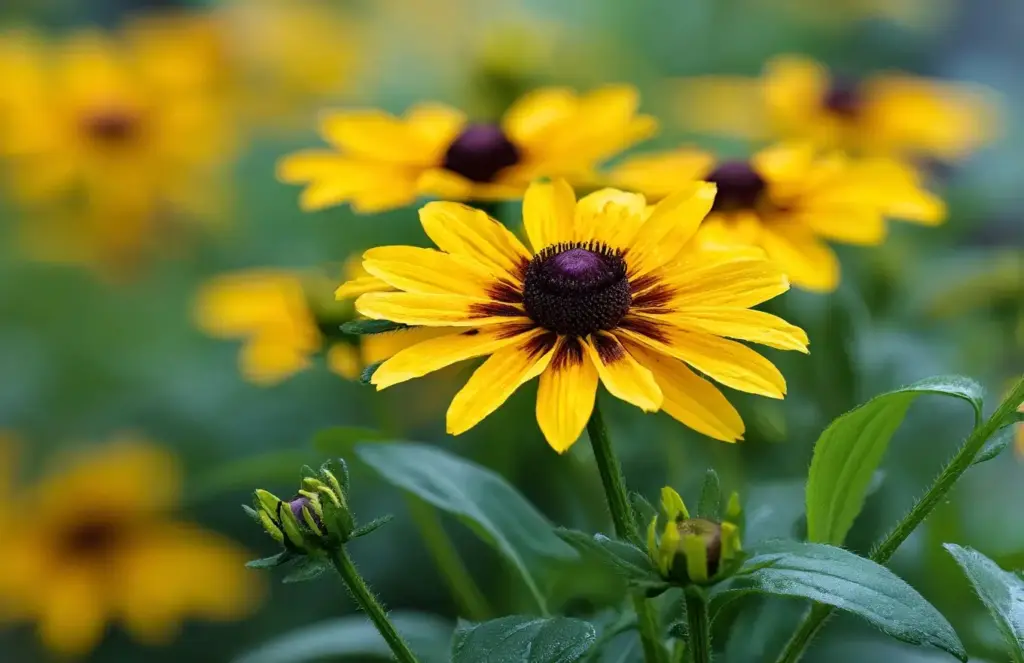
Black-eyed Susan, also known as Rudbeckia hirta, is a cheerful and iconic addition to any perennial garden. These perennial flowering plants are loved for their bright yellow petals and dark central cone, which attract butterflies and pollinators in abundance. Blooming from late summer into fall, Black-eyed Susan provides long-lasting color and a touch of wildflower charm that perfectly complements other garden favorites.
🌱 Growing Conditions
- Soil: Prefers well-draining soil to keep roots healthy and prevent disease.
- Location: Thrives in full sunlight, where it can produce abundant blooms.
- Temperature: Optimal growing temperature is around 70°F, making it a summer star.
- Plant Height: Grows between 1–3 feet, adding vertical interest to your perennial garden.
- Fertilizers: Apply a balanced N-P-K (10-10-10) fertilizer for steady growth and flowering.
Black-eyed Susan’s sunny disposition and resilience make it a fantastic choice for any perennial flowering plants collection, ensuring vibrant color and pollinator activity season after season.
5. Peonies
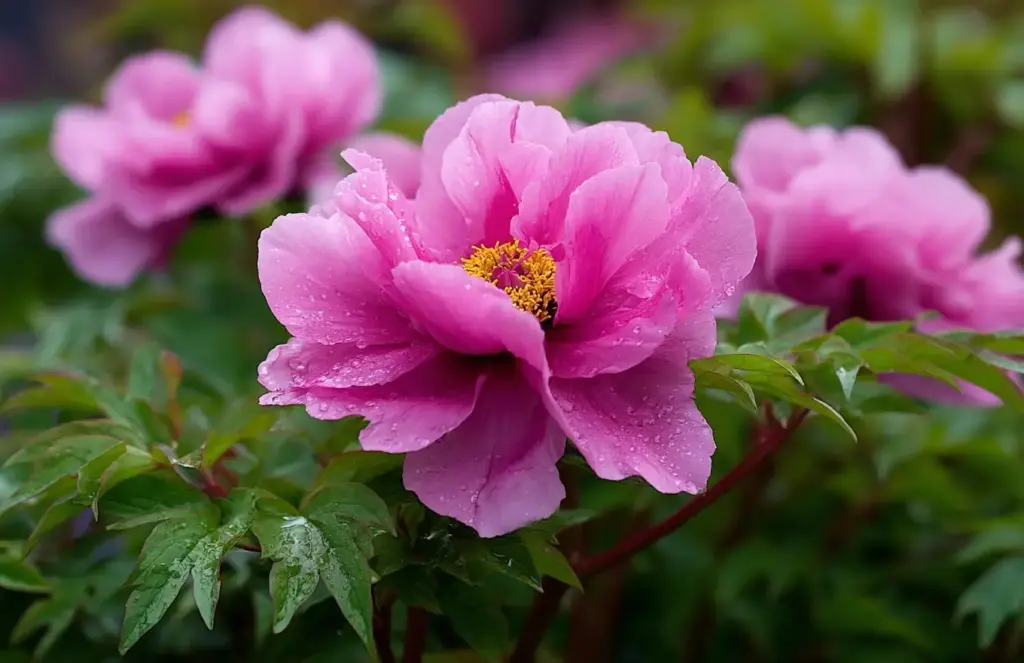
Peonies are a timeless favorite in the perennial garden, renowned for their lush, fragrant blooms and elegant foliage. These perennial flowering plants originate from Asia, Europe, and the Mediterranean, adding a touch of old-world charm to any landscape. Their large, ruffled flowers range in shades from soft pastels to bold, vibrant hues, making them a stunning focal point in garden beds and borders.
🌱 Growing Conditions
- Soil: Moist, well-draining soil with a neutral pH ensures healthy root development and abundant blooms.
- Location: Full sunlight is best for peonies to reach their flowering potential, though they can tolerate partial shade.
- Temperature: They thrive in cooler climates with temperatures around 40°F during dormancy.
- Plant Height: Can reach heights of 3–7 feet, adding impressive stature to your perennial garden.
- Fertilizers: Apply a low-nitrogen fertilizer in spring to encourage blooms without excessive leafy growth.
Peonies bring unparalleled elegance and fragrance to your perennial flowering plants collection, making them a must-have for any gardener seeking long-lasting beauty.
6. Dianthus
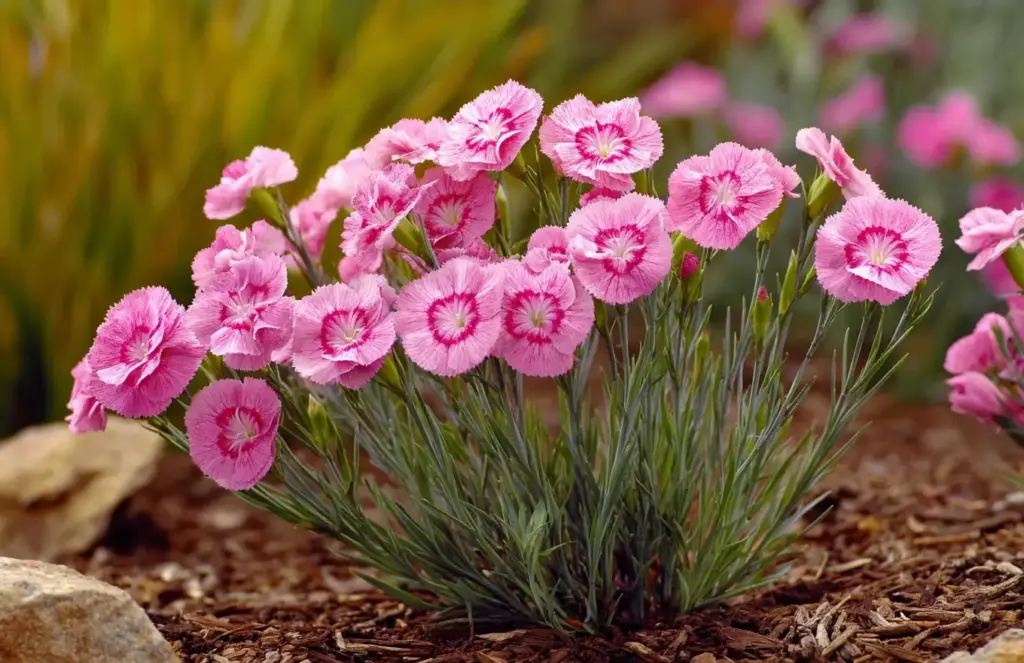
Dianthus is a delightful addition to any perennial garden, offering delicate beauty and a sweet, clove-like fragrance that’s irresistible to both gardeners and pollinators. Native to Asia and Europe, these perennial flowering plants are known for their charming, frilled petals in shades of pink, white, and red. With a long blooming season and a compact growth habit, Dianthus is perfect for borders, containers, and rock gardens alike.
🌱 Growing Conditions
- Soil: Prefers well-draining, slightly alkaline soil to prevent root diseases and promote healthy blooms.
- Location: Full sunlight is essential for maximum flowering.
- Temperature: Grows best between 60–70°F, ensuring steady growth and bloom production.
- Plant Height: Typically reaches up to 3 feet, making it an excellent filler or border plant in your perennial garden.
- Fertilizers: Use slow-release N-P-K (10-10-10) or a balanced liquid fertilizer to support consistent blooms.
Dianthus adds a touch of timeless charm and reliable color to your perennial flowering plants collection, rewarding you with seasons of stunning, fragrant flowers.
7. Asiatic Lily
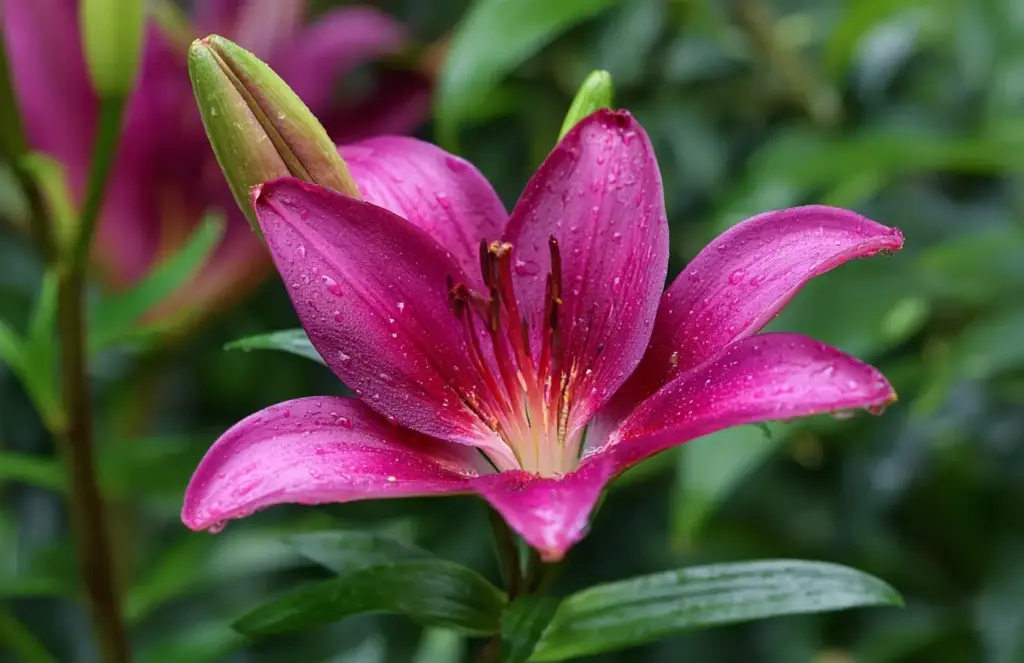
Asiatic lilies bring a vibrant splash of color and elegant form to any perennial garden. These perennial flowering plants are especially prized for their ease of cultivation and their stunning blooms, which range from pure white to deep red and everything in between. Unlike their Oriental counterparts, Asiatic lilies are notably hardy, making them an excellent choice for gardeners seeking reliable, eye-catching flowers.
🌱 Growing Conditions
- Soil: Well-draining, slightly soggy soil enriched with organic matter helps lilies establish strong roots and thrive.
- Location: A shady location is ideal for Asiatic lilies, protecting them from harsh midday sun while still receiving ample light.
- Temperature: Prefers cooler temperatures, ideally between 30–45°F, to support healthy growth and flowering.
- Plant Height: Typically grows to about 4 feet tall, making them perfect for the mid-layer of your perennial garden.
- Fertilizers: Use a high-potash liquid fertilizer to promote strong stems and vibrant blooms.
Asiatic lilies are a showstopper in any perennial flowering plants collection, providing brilliant colors and easy maintenance that even beginner gardeners can enjoy.
8. Chrysanthemum
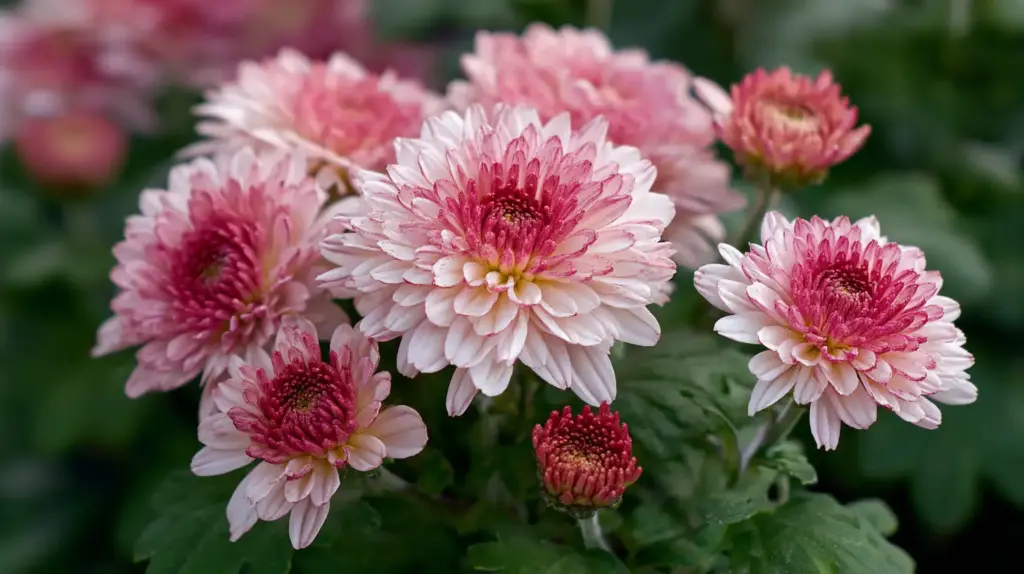
Chrysanthemums, affectionately known as “mums,” are a staple in any perennial garden. These perennial flowering plants bring a burst of color during late summer and fall when many other plants are winding down. With hundreds of varieties to choose from, chrysanthemums come in an array of colors, shapes, and sizes, ensuring that there’s a perfect fit for every garden. They’re also known for their air-purifying properties and are a favorite among pollinators like bees and butterflies.
🌱 Growing Conditions
- Soil: Well-draining, loamy or sandy soil keeps roots healthy and prevents fungal diseases.
- Location: Full sun is essential for maximum flowering and sturdy growth.
- Temperature: Thrives in warm conditions around 85°F, making them perfect for late summer blooms.
- Plant Height: Typically grows between 3–6 feet tall, providing structure and vibrant color to your perennial garden.
- Fertilizers: Balanced nitrogen and potassium fertilizers promote healthy growth and abundant blooms.
Chrysanthemums bring lasting beauty and charm to your perennial flowering plants collection, extending the bloom season and adding a dynamic element to your garden’s landscape.
9. Pincushion Flower
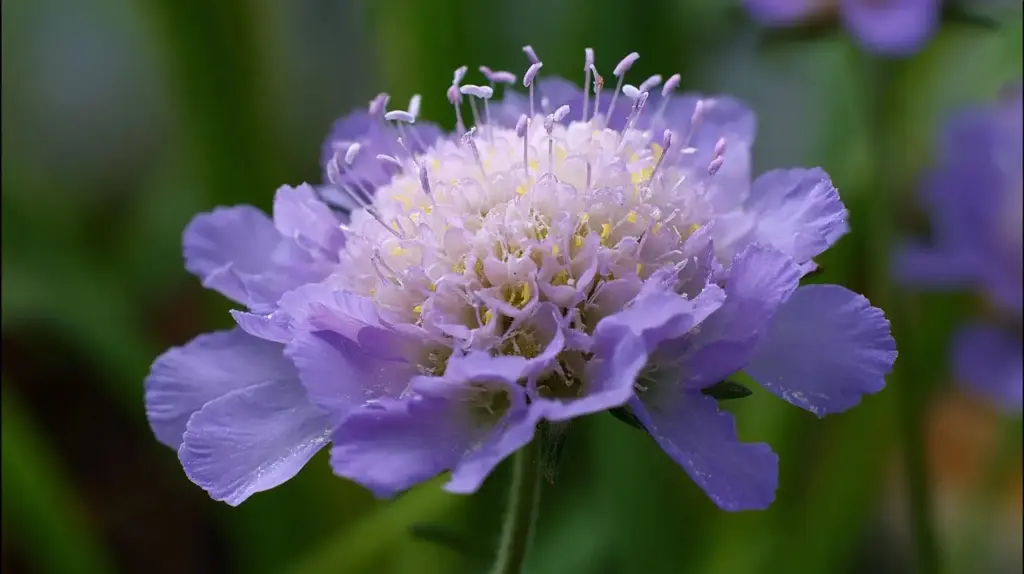
Pincushion flowers, also known as Scabiosa, are a whimsical and pollinator-friendly addition to any perennial garden. These perennial flowering plants are prized for their unique, dome-shaped blooms that resemble pin cushions, drawing bees, butterflies, and even moths into your outdoor oasis. Their long blooming season and compact growth habit make them an excellent choice for borders and containers alike.
🌱 Growing Conditions
- Soil: Well-draining soil is a must to keep roots healthy and prevent waterlogging.
- Location: Full sunlight is ideal for encouraging continuous blooms throughout the growing season.
- Temperature: Best grown in temperatures between 65–70°F, perfect for a range of climates.
- Plant Height: Typically grows to 2–3 feet tall, making them perfect for adding vertical interest to your perennial garden.
- Fertilizers: Apply phosphorus-rich fertilizer to support steady growth and flower production.
Pincushion flowers are an easy and rewarding way to add charm and pollinator value to your perennial flowering plants collection.
10. Veronica
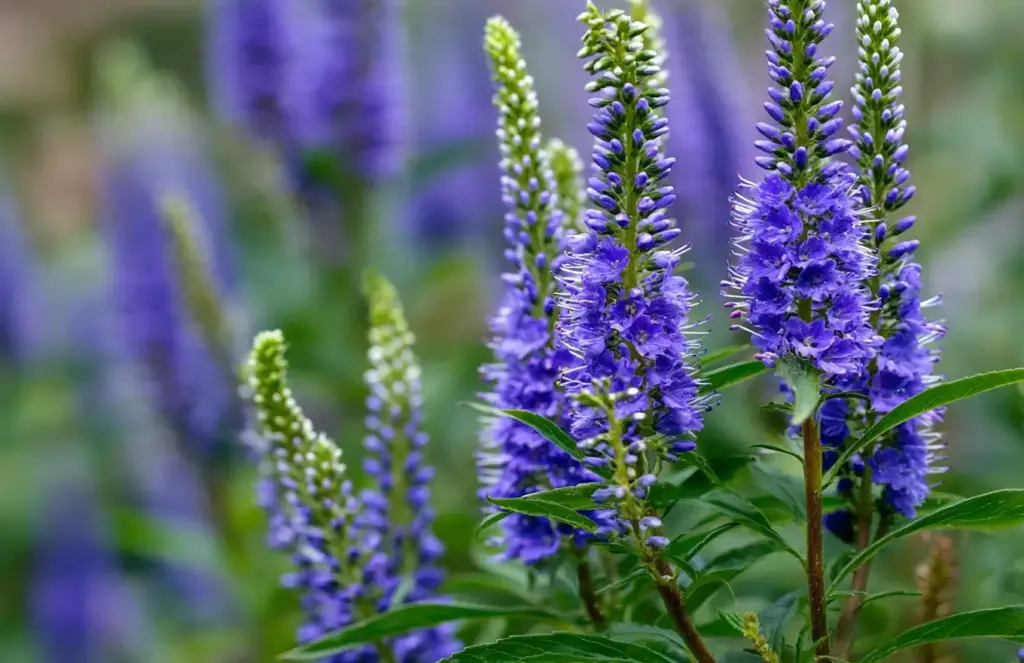
Veronica, also known as speedwell, is a versatile and resilient addition to any perennial garden. These perennial flowering plants are admired for their elegant, spiky blooms that come in shades of blue, pink, white, and purple. They add both vertical interest and a touch of cottage charm to borders, containers, and mixed flower beds. Besides their beauty, Veronica plants are known for their edible flowers and traditional medicinal uses, making them both functional and ornamental.
🌱 Growing Conditions
- Soil: Prefers well-draining soil to prevent waterlogging and promote healthy root growth.
- Location: Full sunlight ensures abundant blooms and sturdy stems.
- Temperature: Ideal growth occurs at around 65°F, perfect for temperate climates.
- Plant Height: Usually grows between 1–3 feet tall, offering a lovely mid-layer to your perennial garden.
- Fertilizers: A balanced N-P-K (10-10-10) fertilizer supports healthy growth and long-lasting blooms.
Veronica is a reliable and low-maintenance star in any perennial flowering plants collection, providing continuous color and pollinator support throughout the growing season.
🌸 Conclusion
A well-planned perennial garden filled with perennial flowering plants is not only a feast for the eyes but also a sustainable way to support local pollinators and enrich your outdoor space. From the towering elegance of peonies to the delicate blooms of Dianthus, each plant brings its own charm and personality to your garden beds. For more inspiration on creating dynamic and colorful garden designs, check out our ideas on flower garden design and best perennial flowers for full sun. With the right soil, sunlight, and care—like those featured in drought-tolerant plants—these beautiful perennials will reward you with vibrant blooms and an ever-evolving landscape year after year.
🌿 FAQ: Perennial Flowering Plants in Your Garden
1. What is a perennial flowering plant?
A perennial flowering plant is a type of plant that lives for more than two years and produces flowers year after year. Unlike annuals, which complete their lifecycle in one season, perennials regrow from their roots each season, making them a reliable choice for sustainable gardens.
2. When should I plant perennial flowering plants?
The best time to plant perennial flowering plants is in the spring or fall when temperatures are mild. Planting during these seasons allows roots to establish before the heat of summer or the cold of winter.
3. How often should I fertilize my perennial garden?
Most perennial gardens benefit from a light application of balanced fertilizer (such as 10-10-10) in the spring as new growth emerges. Avoid over-fertilizing, as this can lead to excessive foliage growth at the expense of flowers.
4. Can I grow perennials in containers?
Absolutely! Many perennial flowering plants like Dianthus, Sedum, and Pincushion flowers thrive in containers. Just ensure proper drainage and use a high-quality potting mix to keep the plants healthy.
5. How do I keep my perennial garden blooming all season?
Select a mix of perennial flowering plants that bloom at different times throughout the growing season. For example, daffodils bloom in early spring, while chrysanthemums provide late-season color. Deadhead spent blooms to encourage continuous flowering.
6. Do perennial flowering plants attract pollinators?
Yes! Many perennial flowering plants attract bees, butterflies, and other beneficial insects, making them essential for supporting local biodiversity and helping pollinate your garden vegetables and fruits.

